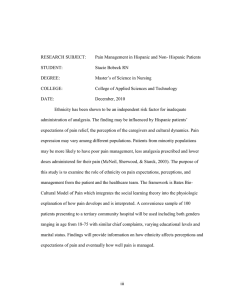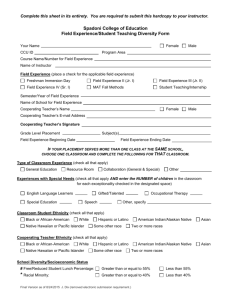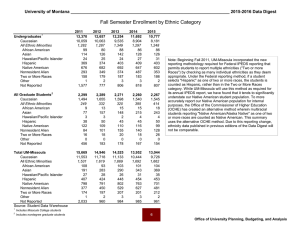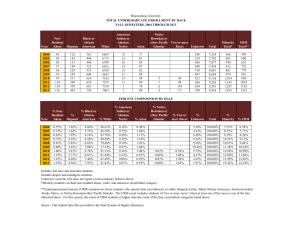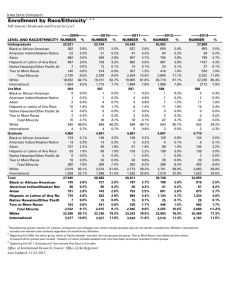A Portrait of the Teaching Profession in an Era of Reform
advertisement
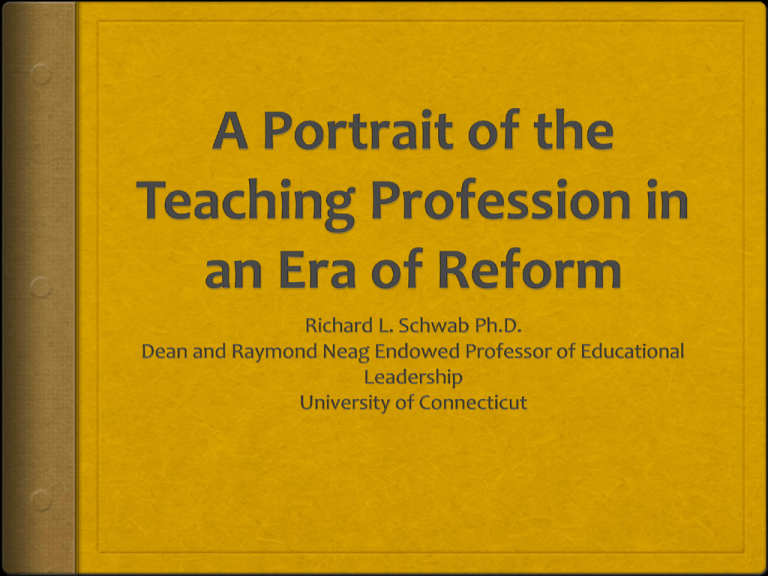
Changes in the Era of Reform1983-Present Our students Our teachers Who are our teachers today? What do they feel are the answers to school reform? What are their challenges? What does research and experience tell us we should do? How can education foundations maximize impact? Who are our students today? Our Children 5-17 Years Old Race / Ethnicity 1980- (47,232) 2012- (53,729) White 74.6 % 53.8% Black 14.5% 13.9% Hispanic 8.5% 23.2% Asian 1.7% 4.5% Pacific Islander - .02% Am Indian/AK Native .08 .09% 2 plus races - 3.6% Poverty Level for 5-17 Year Olds 1990 2012 US 17% 21% Connecticut 9.8% 13.9% Who are the students in the pipeline ? Our Children Under 5 years Old Race / Ethnicity 1980- (16,451 M) 2012- (19,999-M) White 72.4 % 50.1% Black 14.7% 13.8% Hispanic 10.2% 25.8% Asian 1.9% 4.6% Pacific Islander - .9% Am Indian/AK Native .08 .09% 2 plus races - 4.6% Who are our teachers? Our Teachers 1986 to 2011 1980- (2.2M) 2012- (3.4-M) < 29 years old < 5 years of teaching 11 % 8% 21.1% 26% Female 69% 84% White 91% 84% Black 6% 7% Hispanic 2% 6% Teacher Preparation and Beliefs How has teacher preparation changed ? What do today’s teachers believe and how have those beliefs changed/stayed the same ? Are today’s teachers satisfied ? What does message do many reform efforts tell them ? What is within their control ? What does research tell us we need to do to enhance satisfaction and reduce job stress ? Sources of Job Burnout Societal Organizational Burnout Personal Role related Social Support Network Listener Shared Sense of Reality Emotional Challenge Person Emotional Support Technical Support Technical Challenge How can foundations make the most impact ? Education Foundations give us flexibility and the chance to be creative You are above the politics of education You can fund things that really matter but some may think are “frills” You know the players and you know the context of the community You can do important things at bargain levels, more efficiently and effectively My suggestions Todays teacher’s are more complex than ever before One size does not fit all Teachers today and in the future will be working with students from diverse backgrounds Support innovative programs and experiences that help faculty address the unique learning needs of their students Support programs that enhance family and community engagement in schools “Beyond Bake Sales” Suggestions Support collaborative learning efforts Focus on teachers but don’t forget leaders (especially building level) Invest in professional development outside the school day that brings teachers and administrators together Invest in team building and culture building activities Invest in professional development that emphasizes experiential learning- takes in understanding teacher all learn differently Fund travel to visit successful schools, international cultural awareness programs, summer institutes Fund Materials Do what you can to help low income children bridge the technology gap That make the common core come alive Think ahead to prevent problems that hurt the roll out of new programs For example- the new science standards are around the corner (Next Generation Science Standards) Be the voice That supports teachers Supports leadership in your schools Supports community and parental engagement in your school And supports the education of all of our students – today’s and tomorrows


